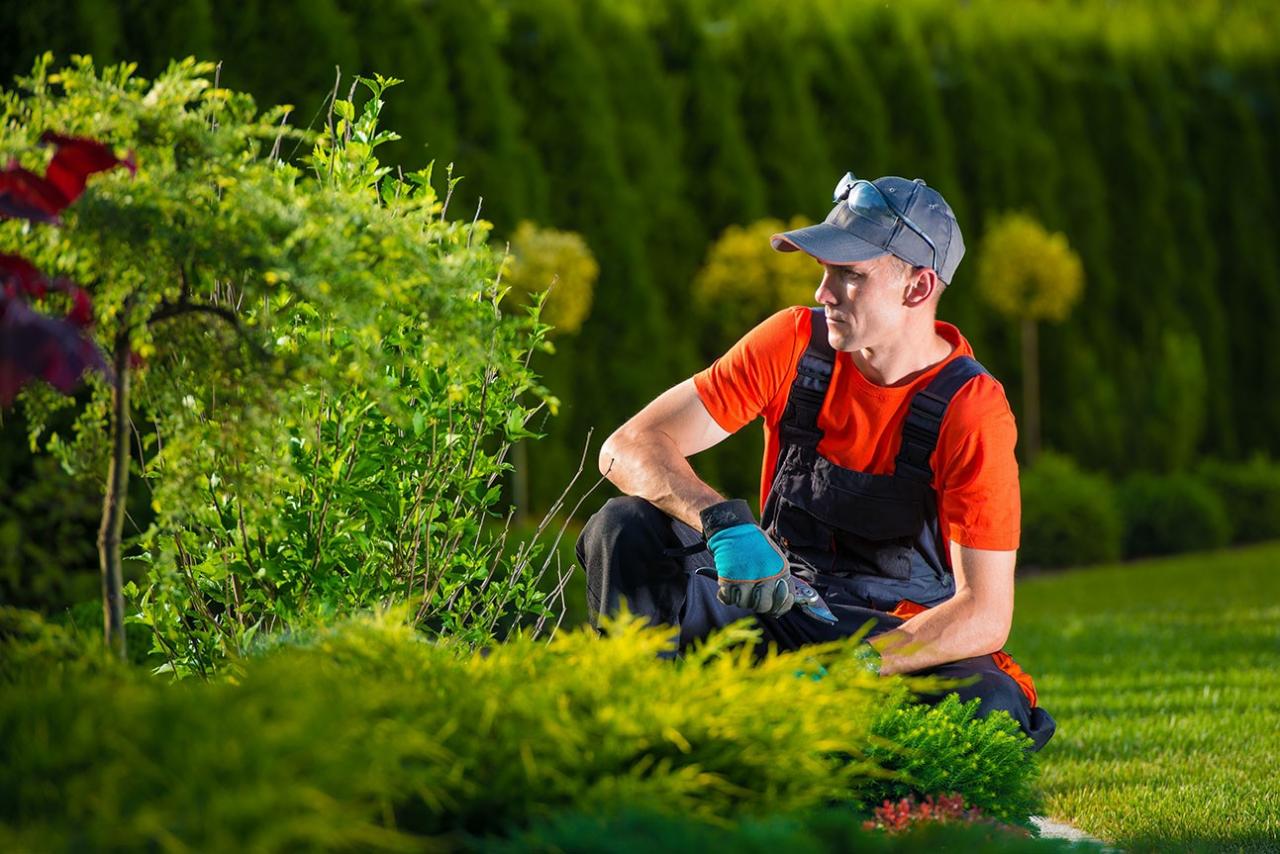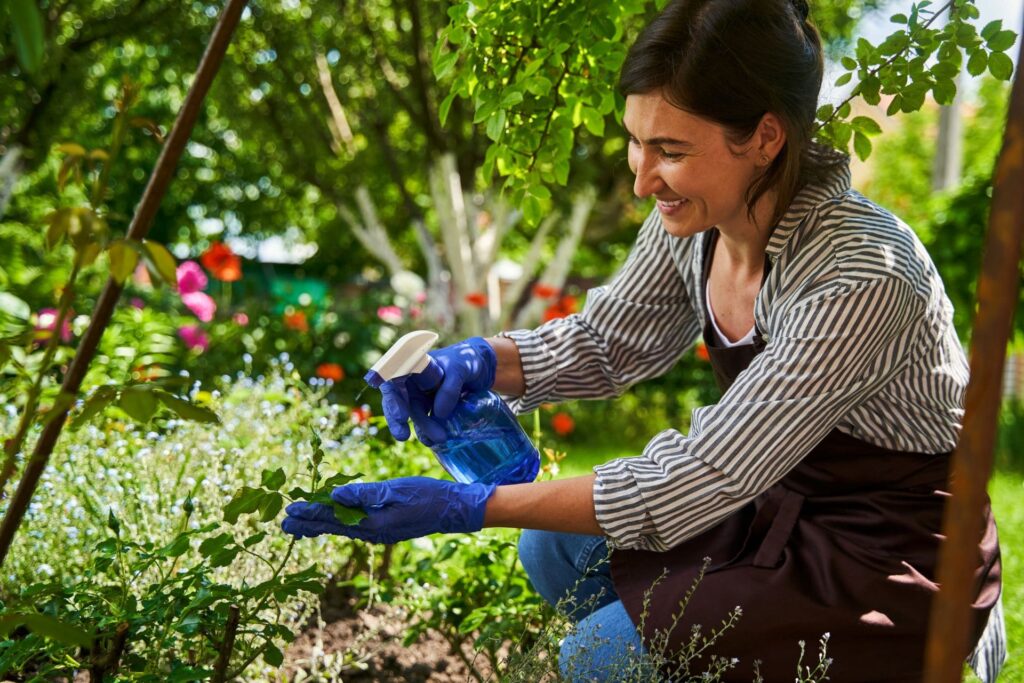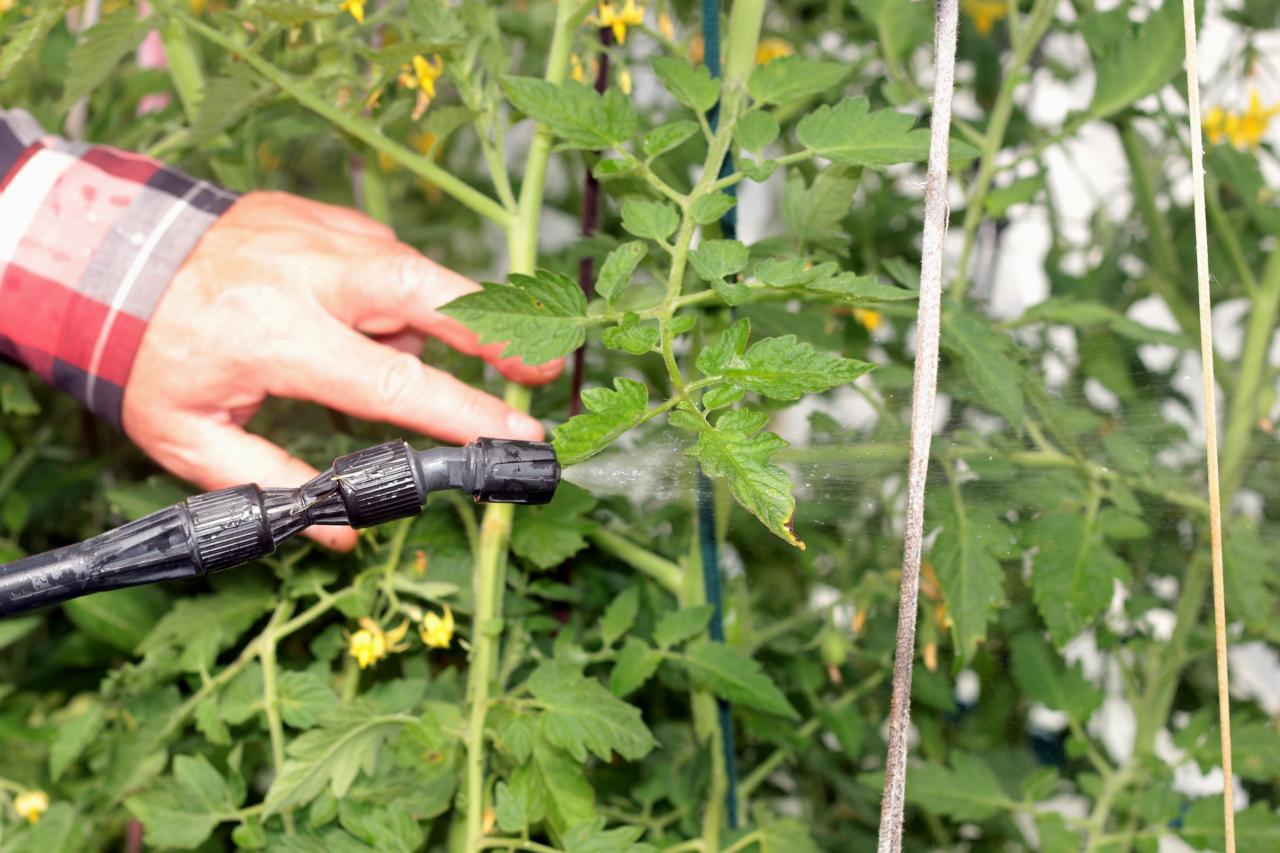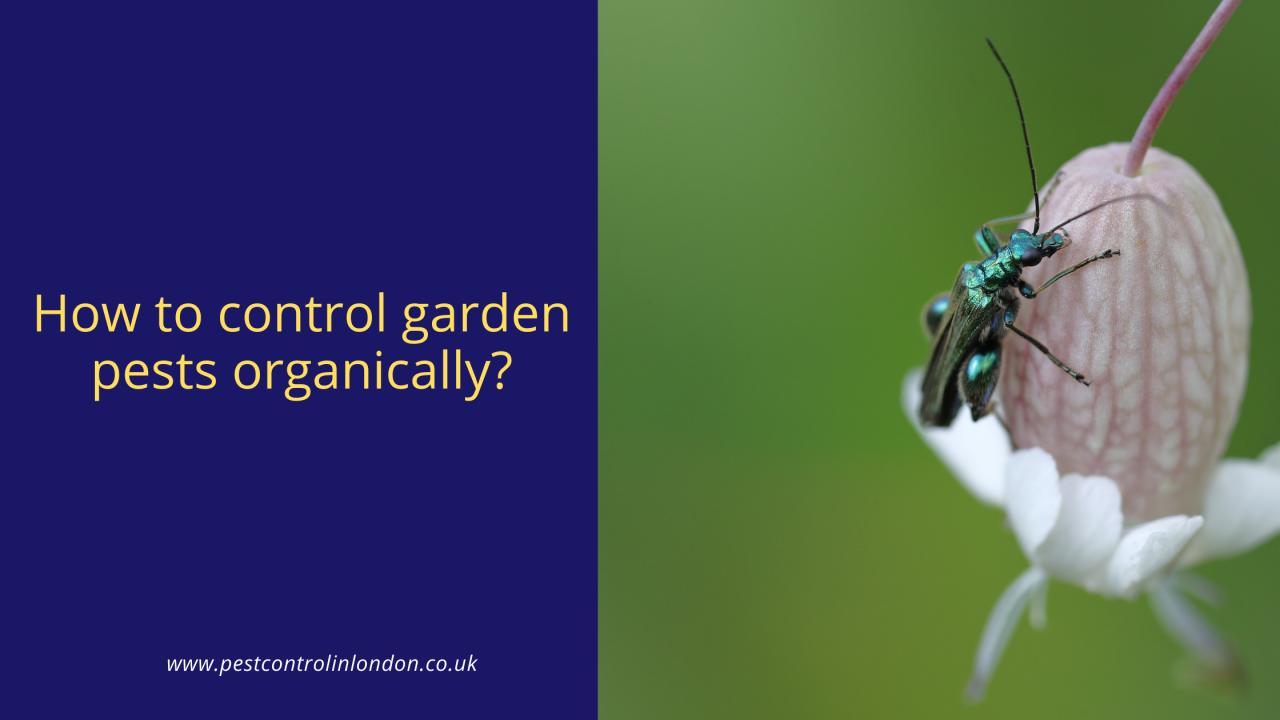Home-garden pest-control is crucial for a thriving garden. This guide dives deep into identifying common pests like aphids, slugs, and spider mites, detailing the damage they inflict and how to combat them. We’ll explore both organic and chemical control methods, highlighting the pros and cons of each approach, and offering practical tips for prevention. From homemade insecticidal soap to companion planting strategies and safe pesticide handling, we’ve got you covered.
Get ready to cultivate a pest-free paradise!
We’ll cover everything from identifying pest damage and choosing the right control method, to creating a healthy soil ecosystem and attracting beneficial insects. Learn how to create a garden layout that naturally deters pests, using companion planting techniques and understanding the life cycles of your garden’s unwanted guests. Whether you prefer organic solutions or targeted chemical treatments, this guide empowers you to make informed decisions to protect your precious plants.
Common Home Garden Pests
Protecting your home garden from pests is crucial for a bountiful harvest. Understanding the common culprits and their behaviors is the first step towards effective pest management. This section will delve into the identification, life cycles, and damage caused by some prevalent garden pests, equipping you with the knowledge to safeguard your plants.
Five Common Garden Pests and Their Life Cycles
Several pests frequently plague temperate climate gardens. Understanding their life cycles is key to effective control.
- Aphids: These tiny, pear-shaped insects reproduce rapidly, both sexually and asexually. A single aphid can produce dozens of offspring, leading to exponential population growth. Their life cycle typically involves eggs laid on host plants in autumn, hatching into nymphs in spring, which mature into adults ready to reproduce. They feed by sucking plant sap.
- Slugs: These mollusks are nocturnal, hiding during the day in damp, shady areas. They lay clusters of eggs in the soil, which hatch into smaller versions of the adult slugs. Their life cycle spans several months, with multiple generations possible in a single growing season depending on the climate.
- Spider Mites: These microscopic arachnids are difficult to see without magnification. They reproduce rapidly, with females laying hundreds of eggs. The life cycle involves eggs hatching into larvae, which then develop into nymphs and finally adults. Their life cycle can be completed in as little as a week under favorable conditions.
- Caterpillars (e.g., Cabbage White Butterfly Larvae): The life cycle of a butterfly begins with eggs laid on host plants. These hatch into caterpillars, which feed voraciously, growing rapidly through several molts. The caterpillar then pupates, forming a chrysalis, from which the adult butterfly emerges.
- Colorado Potato Beetles: These beetles overwinter in the soil as adults. In spring, they emerge and feed on potato plants, mating and laying clusters of eggs on the underside of leaves. The eggs hatch into larvae, which feed heavily, eventually pupating in the soil before emerging as adults to repeat the cycle.
Comparing Damage Caused by Aphids, Slugs, and Spider Mites
Aphids, slugs, and spider mites, while distinct, cause significant damage to vegetable plants. Aphids suck plant sap, leading to stunted growth, yellowing leaves, and reduced yields. Slugs, on the other hand, cause physical damage by chewing on leaves, stems, and fruits, leaving characteristic slime trails. Spider mites also suck plant sap, causing stippling (tiny yellow or white spots) on leaves, which can eventually lead to leaf browning and death.
The type of damage is visibly different, allowing for relatively easy identification of the pest.
Distinguishing Between Different Types of Caterpillars
Caterpillars vary significantly in appearance, making identification crucial for targeted control. Key distinguishing features include size, color, markings (stripes, spots), hairiness (presence or absence of bristles or hairs), and the shape and arrangement of prolegs (fleshy appendages on the abdomen). For example, a monarch caterpillar is striped, while a cabbage white caterpillar is green with yellow stripes. Detailed observation is key to accurate identification.
Common Garden Pests and Control Methods
| Pest | Damage Type | Plant Affected | Control Method |
|---|---|---|---|
| Aphids | Sap sucking, stunted growth | Many vegetables, roses | Insecticidal soap, ladybugs |
| Slugs | Chewing on leaves, stems, fruits | Lettuce, strawberries, many vegetables | Diatomaceous earth, beer traps, handpicking |
| Spider Mites | Sap sucking, leaf stippling | Many vegetables, fruits | Insecticidal soap, water sprays |
| Cabbage White Butterfly Larvae | Leaf chewing | Cabbage, broccoli, cauliflower | Handpicking, Bacillus thuringiensis (Bt) |
| Colorado Potato Beetle | Leaf chewing | Potatoes, tomatoes | Handpicking, insecticides |
| Japanese Beetles | Leaf skeletonization | Roses, many vegetables | Handpicking, traps |
| Whiteflies | Sap sucking, leaf yellowing | Tomatoes, peppers | Yellow sticky traps, insecticidal soap |
| Cutworms | Stem girdling, plant death | Many vegetables | Collars around plants, handpicking |
| Earwigs | Chewing on leaves, flowers | Many vegetables, flowers | Traps, handpicking |
| Grasshoppers | Leaf chewing | Many vegetables, ornamentals | Insecticides, barriers |
Organic Pest Control Methods: Home-garden Pest-control

Organic pest control prioritizes ecological balance and minimizes environmental impact, unlike chemical methods. It focuses on preventing pest problems through proactive gardening practices and utilizing natural solutions to manage infestations when they occur. This approach fosters a healthier ecosystem within your garden, benefiting both plants and beneficial insects.Organic pest control relies heavily on understanding the natural relationships within your garden ecosystem.
It leverages natural predators and biological controls to keep pest populations in check, rather than relying on toxic chemicals that can harm beneficial insects, pollinators, and even you.
Homemade Insecticidal Soap Solution
Creating a homemade insecticidal soap solution is a simple and effective way to control many common garden pests, such as aphids, spider mites, and mealybugs. This solution works by disrupting the pests’ cell membranes, leading to dehydration and death. It’s crucial to use it carefully, as it can also harm beneficial insects if overused.
- Combine 1 tablespoon of liquid castile soap (such as Dr. Bronner’s) with 1 gallon of water in a spray bottle.
- Shake well to mix thoroughly.
- Spray directly onto affected plants, focusing on the undersides of leaves where pests often hide.
- Reapply as needed, typically every few days, but avoid spraying during the hottest part of the day or when plants are under stress from drought.
Natural Pest Repellent Recipes
Several readily available ingredients can be used to create effective natural pest repellents. These repellents work by masking the scent of plants, making them less attractive to pests, or by repelling pests directly.
- Garlic Spray: Blend several cloves of garlic with water, let it steep for a few hours, strain, and spray directly onto plants. The strong odor deters many insects.
- Peppermint Oil Spray: Mix a few drops of peppermint essential oil with water in a spray bottle. Peppermint’s scent repels many pests, including ants and aphids. Always dilute essential oils properly to avoid damaging plants.
- Neem Oil Spray: Neem oil is a natural insecticide derived from the neem tree. Dilute neem oil according to package instructions and spray onto plants. It disrupts the life cycle of many insects.
Companion Planting to Deter Pests
Companion planting involves strategically planting certain plant species together to deter pests. Some plants release chemicals that repel pests, while others attract beneficial insects that prey on common garden pests. However, the effectiveness of companion planting can vary depending on the specific plants and pests involved, and the overall garden environment.
Garden Layout Incorporating Companion Plants
This diagram illustrates a sample garden layout utilizing companion planting. Remember, this is a suggestion and the best approach will depend on your specific needs and the pests prevalent in your region.
Diagram: Imagine a rectangular garden bed. In one section, you plant tomatoes (vulnerable to aphids) alongside basil (repels aphids). In another, you place carrots (attracts beneficial nematodes) near onions (deters carrot root flies). Finally, marigolds (repels nematodes and other pests) are planted throughout the garden as a border. Each plant type is clearly labeled within the diagram’s respective section.
Chemical Pest Control Methods

Chemical pest control offers a quick and often effective solution for managing infestations in home gardens. However, it’s crucial to understand the different types of pesticides, their applications, and potential risks before using them. Improper use can harm beneficial insects, pollute the environment, and even pose health risks to humans and pets.
Types of Chemical Pesticides
Chemical pesticides are categorized based on their active ingredients and target pests. Insecticides target insects, herbicides target weeds, and fungicides target fungal diseases. Within these categories, there’s a wide variety of chemicals with differing modes of action. For instance, some insecticides work by contact, killing insects upon direct contact, while others are systemic, absorbed by the plant and toxic to insects that feed on it.
Effective home-garden pest control often involves understanding the ecosystem. Creating a balanced environment is key, and this principle extends beyond your backyard. For instance, improving air quality through thoughtful landscaping, like those discussed in this article on incorporating green elements into a rooftop landscape design for improved air quality , can indirectly benefit your garden by supporting beneficial insects that naturally control pests.
Ultimately, a healthy environment, whether rooftop or backyard, leads to better pest management.
Herbicides can be selective, targeting specific weed types, or non-selective, killing all vegetation they contact. Understanding these differences is crucial for effective and safe pest management. Examples include organophosphates (like malathion), carbamates (like carbaryl), neonicotinoids (like imidacloprid – use with caution due to environmental concerns), and pyrethroids (like permethrin). Each has different levels of toxicity and persistence in the environment.
Effective home-garden pest control is crucial for a thriving garden, but sometimes, the best defense is a well-planned offense. Creating a garden design that naturally deters pests is key; for instance, strategically planting herbs that repel insects can be hugely beneficial. Check out some inspiring ideas for home garden design to help you build a pest-resistant haven.
Remember, a healthy garden design is the first step to minimizing pest problems and maximizing your harvest.
Effectiveness and Safety of Chemical Pesticides
The effectiveness of a chemical pesticide depends on factors such as the specific pest, the concentration of the active ingredient, the method of application, and environmental conditions. For example, a broadleaf herbicide like glyphosate is highly effective in killing broadleaf weeds but will not control insects. Conversely, an insecticide like permethrin is effective against many insects but will not control fungal diseases or weeds.
Safety concerns vary significantly. Organophosphates and carbamates are known to be more toxic to humans and other mammals than pyrethroids, which generally have lower toxicity but can still be harmful if misused. Neonicotinoids, while effective, have raised significant concerns about their impact on pollinators like bees.
Proper Application Techniques and Safety Precautions, Home-garden pest-control
Proper application techniques are vital for maximizing effectiveness and minimizing risks. Always follow the instructions on the pesticide label carefully. This includes wearing appropriate protective gear such as gloves, eye protection, and a respirator. Apply pesticides only when weather conditions are favorable (e.g., calm winds, no rain expected) to prevent drift and runoff. Target the application to the pest, avoiding unnecessary spraying.
Dispose of empty containers properly according to local regulations. Consider using less toxic alternatives whenever possible, and always prioritize integrated pest management strategies that combine various control methods.
Safe Pesticide Handling and Storage
Safe handling and storage are paramount to prevent accidental exposure and environmental contamination.
- Store pesticides in their original containers in a cool, dry, well-ventilated area, locked away from children and pets.
- Never mix pesticides in food or drink containers.
- Always wash your hands thoroughly with soap and water after handling pesticides.
- Dispose of empty containers and leftover pesticides according to label instructions and local regulations.
- Read and understand the Safety Data Sheet (SDS) for each pesticide before use.
- Keep pesticides out of reach of children and pets.
Decision-Making Flowchart for Pest Control Method Selection
The choice between organic and chemical pest control depends on several factors. This flowchart illustrates a simplified decision-making process:[Imagine a flowchart here. It would start with a box: “Pest Problem?”. Branching from this would be “Yes” and “No”. “No” leads to a box: “No action needed”.
“Yes” leads to a box: “Severity of infestation?”. This branches to “Low” and “High”. “Low” leads to “Try organic methods”. “High” leads to a box: “Organic methods effective?”. This branches to “Yes” (leading to “Continue organic methods”) and “No” (leading to “Consider chemical control, taking necessary precautions”).]
Pest Prevention Strategies

Proactive pest prevention is far more effective and less harmful to your plants and the environment than battling infestations after they’ve begun. By implementing a few key strategies, you can significantly reduce the likelihood of pest problems and create a thriving, healthy garden. This involves a holistic approach, focusing on building a resilient ecosystem rather than relying solely on reactive pest control.
Regular garden maintenance plays a crucial role in preventing pest infestations. A clean and well-maintained garden is less attractive to pests, making it harder for them to establish themselves. Proper plant selection and spacing further minimize opportunities for pest proliferation, while attracting beneficial insects provides natural pest control. Finally, nurturing a healthy soil ecosystem strengthens plants’ natural defenses, making them less susceptible to pests.
Preventative Measures to Minimize Pest Infestations
Implementing these five preventative measures significantly reduces the risk of pest problems in your garden. These practices work synergistically to create a less hospitable environment for pests while promoting healthy plant growth.
- Regularly inspect plants for signs of pests and diseases, allowing for early intervention and preventing widespread damage.
- Remove weeds promptly, as they can harbor pests and compete with your plants for resources.
- Practice crop rotation to disrupt pest life cycles and reduce pest buildup in the soil.
- Clean up fallen leaves and debris at the end of the growing season to eliminate overwintering sites for pests.
- Use appropriate barriers, such as netting or row covers, to protect vulnerable plants from pests.
The Importance of Regular Garden Maintenance in Pest Control
Regular maintenance is not just about aesthetics; it’s a cornerstone of effective pest prevention. Consistent attention to detail significantly reduces the chances of pest infestations. This involves several key practices that contribute to a healthier and more pest-resistant garden.
- Pruning: Removing dead or diseased branches improves air circulation and sunlight penetration, reducing the humidity that many pests thrive in.
- Watering: Consistent, deep watering promotes strong root systems, leading to healthier plants better able to withstand pest attacks. Avoid overhead watering which can spread diseases.
- Mulching: Applying a layer of mulch helps regulate soil temperature and moisture, suppressing weed growth and reducing pest habitats.
- Sanitation: Regularly removing fallen fruit, vegetables, and debris prevents pests from finding food sources and breeding grounds.
Proper Plant Selection and Spacing to Reduce Pest Problems
Careful plant selection and spacing significantly impact pest prevalence. Choosing pest-resistant varieties and ensuring adequate spacing between plants improves air circulation and reduces humidity, creating a less favorable environment for many pests.
- Pest-resistant varieties: Many plant varieties are bred for resistance to specific pests. Researching and selecting these varieties can dramatically reduce pest problems.
- Appropriate spacing: Crowded plants create humid microclimates ideal for pest development. Adequate spacing allows for better air circulation and reduces the spread of diseases.
- Companion planting: Certain plants can repel pests or attract beneficial insects. For example, marigolds are known to deter nematodes.
Attracting Beneficial Insects to the Garden
Beneficial insects play a vital role in natural pest control. By creating a welcoming habitat, you can attract these allies to your garden, reducing the need for chemical interventions. These insects help maintain a natural balance, keeping pest populations in check.
- Plant nectar-rich flowers: Many beneficial insects, like ladybugs and lacewings, feed on nectar and pollen. Including flowering plants provides a food source and encourages them to stay.
- Provide shelter: Leaving some areas of your garden slightly unkempt, with leaf litter or small rock piles, offers shelter for beneficial insects.
- Avoid broad-spectrum insecticides: These insecticides kill both beneficial and harmful insects, disrupting the natural balance.
Building and Maintaining a Healthy Soil Ecosystem
Healthy soil is the foundation of a thriving garden and a key component of pest prevention. Nutrient-rich soil supports strong, resilient plants that are better equipped to withstand pest attacks. Maintaining soil health is a continuous process that requires consistent effort.
- Composting: Adding compost improves soil structure, aeration, and nutrient content, creating a healthier environment for plants.
- Cover cropping: Planting cover crops between growing seasons helps improve soil health, suppress weeds, and prevent soil erosion.
- Soil testing: Regular soil testing helps identify nutrient deficiencies and allows for targeted amendments to optimize soil health.
Identifying Pest Damage

Recognizing pest damage is crucial for effective home garden pest control. Early identification allows for prompt intervention, minimizing damage and preventing widespread infestation. Accurate diagnosis also helps determine the appropriate control method, whether organic or chemical. Failing to identify the source of damage can lead to ineffective treatments and further plant stress.Identifying pest damage involves carefully observing your plants for visual signs of feeding activity, physical damage, and other symptoms.
Different pests cause distinct types of damage, allowing for accurate identification of the culprit. This, in turn, guides the selection of the most appropriate and effective control strategy.
Visual Signs of Pest Damage
Visual inspection is the first step in identifying pest damage. Common signs include holes in leaves, chewed edges, discoloration, wilting, stunted growth, and the presence of pests themselves or their droppings. Leaf miners create serpentine trails within leaves, while chewing insects often leave ragged holes or completely skeletonized leaves. Sucking insects, on the other hand, may cause yellowing, stippling, or curling of leaves.
Wilting can be a symptom of root damage caused by pests like grubs or nematodes.
Visual Guide to Chewing and Sucking Insect Damage
Chewing insects leave easily visible signs of their feeding. Caterpillars, for instance, often create large, irregular holes in leaves, sometimes consuming entire leaves except for the larger veins. Beetles may leave small, round holes or skeletonize leaves by consuming the leaf tissue between the veins. Grasshoppers often cause ragged, irregular damage to foliage. In contrast, sucking insects cause less obvious but equally damaging effects.
Aphids, for example, cause leaves to become curled, yellowed, or stunted. Scale insects often appear as small bumps on stems and leaves, causing discoloration and weakening the plant. Thrips leave tiny, silvery streaks or stippling on leaves. Whiteflies leave a sticky residue called honeydew, which can attract sooty mold.
Distinguishing Pest Damage from Disease Symptoms
Differentiating between pest damage and disease symptoms is critical for effective treatment. Pest damage is often localized and irregular, while disease symptoms are frequently more systematic and follow a pattern. For example, chewing insect damage will appear as holes or missing leaf tissue, while fungal diseases may cause spots or lesions with a defined shape and color. Viral diseases can cause mottling or discoloration across the entire leaf surface.
Bacterial diseases might lead to soft rot or wilting. Knowing the difference between these symptoms helps gardeners choose the appropriate control measures; pest infestations require pest control, while diseases require fungicides or other disease-specific treatments. For example, a plant with circular brown spots surrounded by yellow halos is likely suffering from a fungal leaf spot disease, not a chewing insect infestation.
Similarly, a plant with stunted growth and yellowing leaves could be suffering from a root nematode infestation, rather than a viral disease causing similar symptoms.